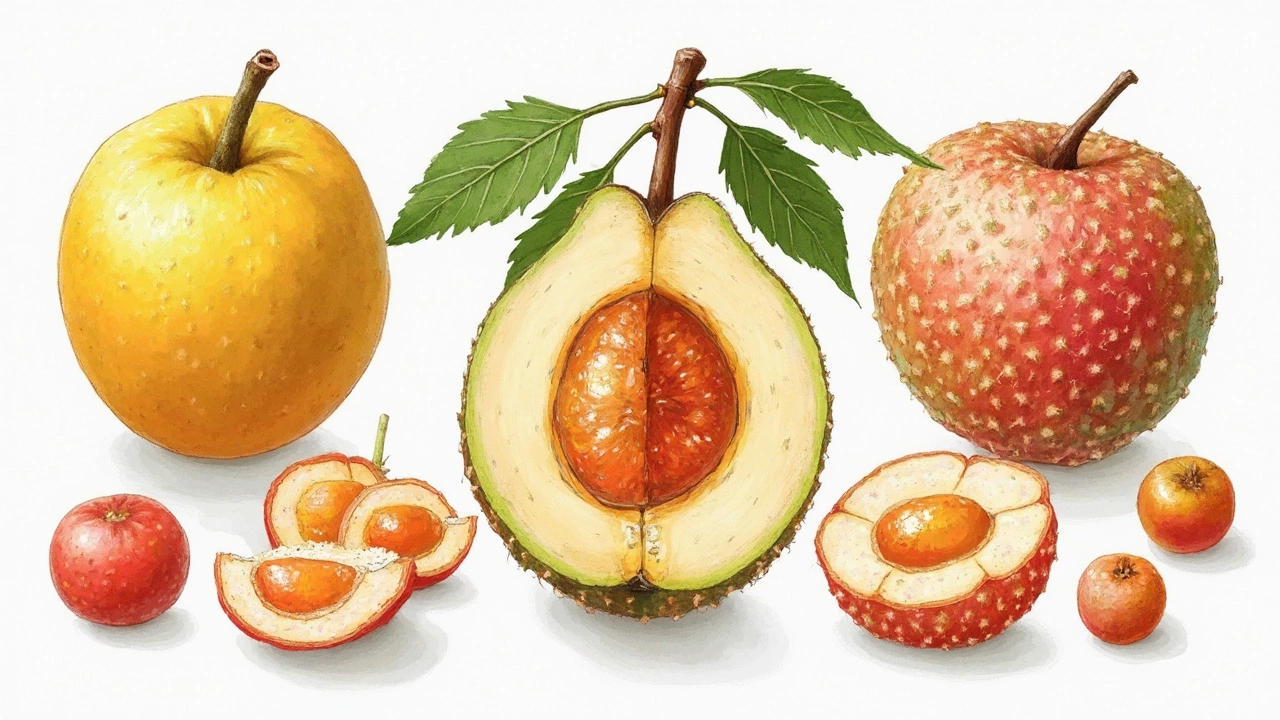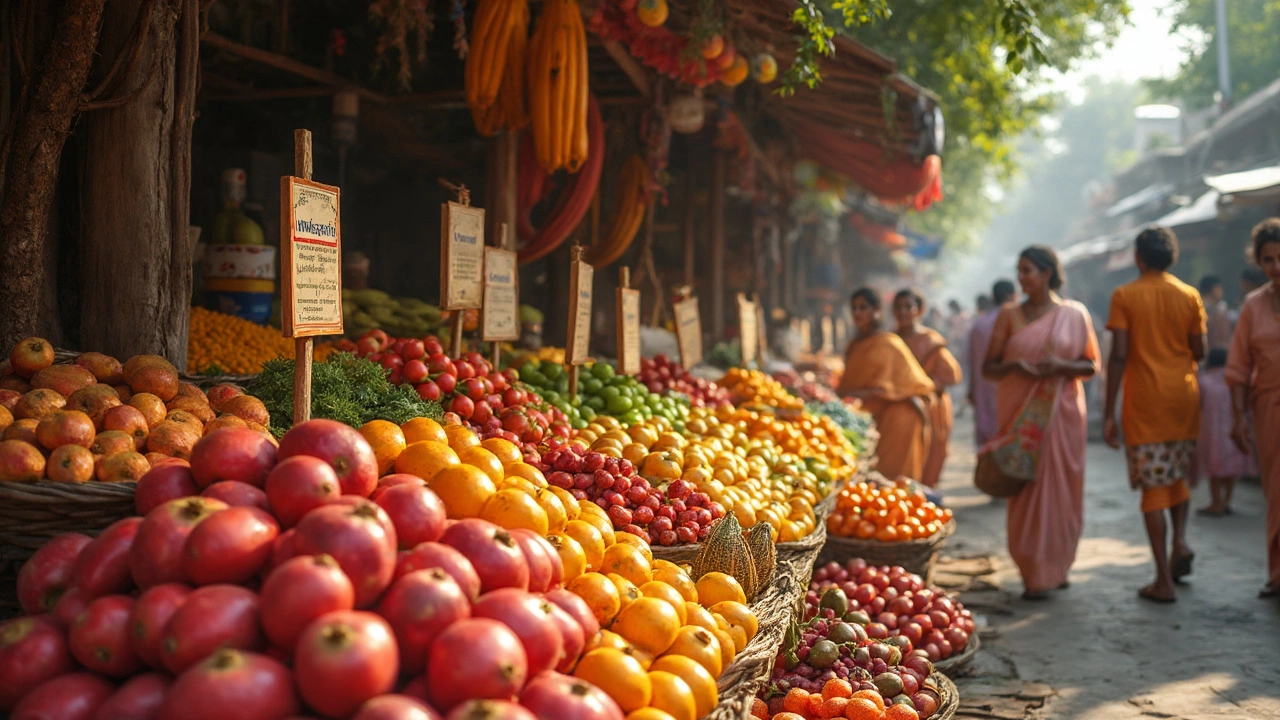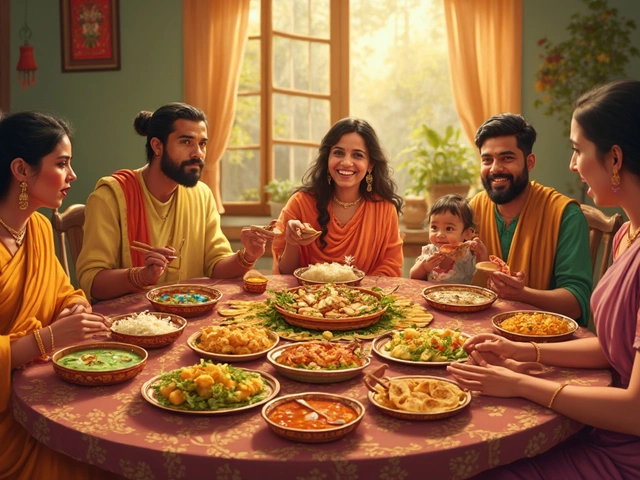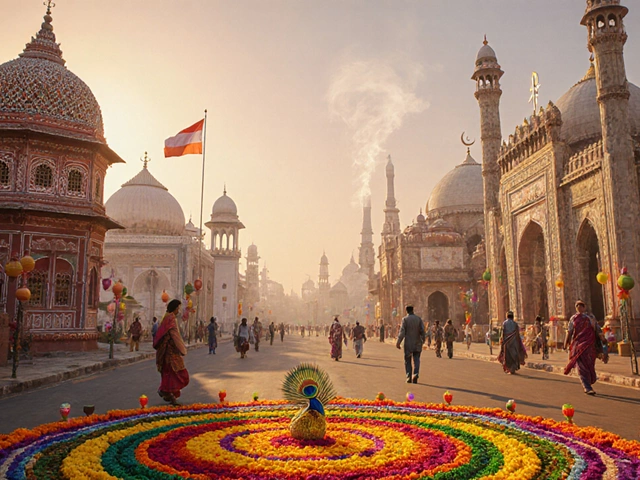If you ask ten people in India what the healthiest fruit is, you’ll get at least six different answers—maybe more if you include neighbors and their grandmas. Mango gets all the love for being the king, and guava always shows up right when school exams start. But what you really want to know is: which one is the best for your health, day after day?
This isn’t just small talk at the tea stall. Picking the healthiest fruit could mean more energy, a better immune system, and less money wasted on multivitamins. Not all fruits are created equal—some have sky-high Vitamin C, others are bursting with fiber, and a few come with a big antioxidant punch. The trick is figuring out which one actually fits what your body needs.
Plus, fruits in India change with the seasons. If you’re always reaching for apples just because it’s easy, you might be missing out on local heroes like amla or papaya. These aren’t just cheap—they’re crazy good for you and easy to toss in a lunchbox or smoothie.
- Why Indian Fruits Deserve a Real Look
- Nutritional Showdown: The Top Contenders
- More Than Just Calories—Hidden Health Benefits
- How to Shop, Store, and Eat for Maximum Gains
Why Indian Fruits Deserve a Real Look
When you walk through a typical Indian fruit market, you're not just looking at delicious snacks—you're staring at serious nutrition. India isn’t just a big producer of fruits; it’s home to some of the world’s most nutrient-packed options. If you want to nail healthiest fruit India or pick under-the-radar champs, Indian fruits are stacked with reasons to pay attention.
Take amla (Indian gooseberry) for example. It packs about 20 times more Vitamin C than an orange—yep, it's that insane. Guava gives you more dietary fiber per bite than almost any fruit out there. And papaya? It’s loaded with immune-boosting Vitamin A and digestive enzymes you don’t often find outside a pharmacy aisle.
- Mango: Besides taste, it’s rich in Vitamin C, Vitamin A, and antioxidants.
- Guava: Super high in Vitamin C, fiber, and has very few calories.
- Papaya: Full of Vitamin A, good for the gut, and so easy on the stomach.
- Amla: Insanely high Vitamin C, supports immunity and skin health.
- Banana: Fast energy, easy to digest, and gives potassium for heart health.
Eating Indian fruits is also great for your wallet. Most local fruits are cheap when they're in season and don’t travel halfway around the world to hit your table. Fresher fruit equals more nutrition—that’s just science, not marketing.
| Fruit | Vitamin C (mg/100g) | Fiber (g/100g) | Main Benefit |
|---|---|---|---|
| Amla | ~600 | 3.4 | Immunity, skin |
| Guava | ~228 | 5.4 | Digestion, Vitamin C |
| Papaya | ~61.8 | 1.8 | Digestion, Vitamin A |
| Mango | ~36.4 | 1.6 | Eye health, antioxidants |
Honestly, if you’re in India, skipping local fruits for imports like apples or kiwis is just a missed opportunity. With something this easy, cheap, and loaded with health benefits, eating local is a no-brainer. It keeps your meals interesting, your nutrients up, and your hard-earned cash in your pocket.
Nutritional Showdown: The Top Contenders
If you want a straight answer on the healthiest fruit in India, you need a side-by-side look at the big names. Let’s skip the guesswork and line up the facts on five heavy hitters: amla, guava, mango, papaya, and pomegranate. Each one’s got its own advantages—and it’s way more than just taste.
- Amla (Indian Gooseberry): Huge for Vitamin C—way more than oranges, honestly. Just 100 grams can give you over 400mg, which covers your daily need several times over. It’s also got good fiber and is famous for helping with immunity and digestion.
- Guava: Another Vitamin C powerhouse, and it’s loaded with fiber. One regular guava can have 4x the Vitamin C of an orange. Plus, it’s cheap, easy to find, and helps if you’ve got stomach issues.
- Mango: Has less Vitamin C but plenty of Vitamin A and antioxidants. Mango is famous as ‘the king of fruits’ and gives a ton of energy during the summer. Trouble is, it’s high in sugar—so not great if you’re watching your calorie or blood sugar intake.
- Papaya: Your go-to for a healthy gut. Lots of digestive enzymes, plenty of Vitamin C and A. Super helpful for skin and eyesight too. It’s soft, easy to eat, and rarely causes allergies.
- Pomegranate: Famous for antioxidants called punicalagins, which you won’t find in most other fruits. Excellent for blood, heart health, and even blood pressure. Luckily, it’s also available almost year-round.
| Fruit | Vitamin C (mg) | Fiber (g) | Calories | Antioxidants |
|---|---|---|---|---|
| Amla | 445 | 3.4 | 44 | Very High |
| Guava | 228 | 5.4 | 68 | High |
| Mango | 36 | 1.6 | 60 | Medium |
| Papaya | 61 | 1.7 | 43 | High |
| Pomegranate | 10 | 4.0 | 83 | Very High |
If you’re still on the fence, here’s a cheat code: if you’re aiming for immune strength, grab amla or guava. If you want something for heart health or fighting inflammation, pomegranate is a clear winner. For the best value, eat seasonally—what’s fresh in the market is almost always packed with more nutrients than off-season imports.

More Than Just Calories—Hidden Health Benefits
So, let’s be real: picking the healthiest fruit in India isn’t just about calories or sugar. The magic lies in the extra stuff these fruits bring to your body—like antioxidants, vitamins, and even some natural goodies you probably don’t hear about in regular food ads.
Take amla, for example. It’s not just sour and old-school; it has crazy-high levels of vitamin C. One little amla a day can give you nearly 20 times more vitamin C than an orange. What does that mean? Stronger immunity, better skin, and, if you’re like me, fewer sick days (which Fiona loves since I stop spreading germs at home).
Now, let’s look at guava. This fruit is a real underdog. Guava doesn’t just help your bowel movements—one guava gives you more fiber than most apples and twice the vitamin C of an orange. You get antioxidants, too, which fight those free radicals everyone talks about but never really explains. Basically, free radicals are the bad guys speeding up aging; antioxidants are your body’s shield.
If you’re after something easier on the gut, papaya is awesome. It has natural enzymes like papain that help digest protein-heavy meals. If you ever get that heavy, bloated feeling after a big dinner, a slice of papaya in the evening can actually help settle things down.
Want a quick snapshot of why these Indian fruits go way beyond basic nutrition? Check this out:
| Fruit | Star Nutrient | Perks You Get |
|---|---|---|
| Amla | Vitamin C | Immunity boost, better skin |
| Guava | Fiber, Vitamin C | Gut health, anti-aging benefits |
| Papaya | Papain enzyme | Improved digestion |
| Pomegranate | Iron, Antioxidants | Better blood health, heart protection |
The best part? Mixing these up in your routine means you attack your health goals from all sides—better gut, stronger immune system, and even smoother skin. Not bad for something you can pick up for cheap at the local fruit walla.
How to Shop, Store, and Eat for Maximum Gains
Straight up—if you want the healthiest fruit India has to offer, don’t just pick whatever looks brightest on the shelf. You’ll get the best bang for your buck if you shop seasonally and locally. Fruits grown closer to home usually have more nutrients left compared to ones trucked in from far away.
- Shop smart: Hit up your local markets right after deliveries, like early morning or evening. The fruits are fresher, sometimes even picked that same day.
- Go for color and smell: A ripe papaya or guava gives off a sweet scent. Color matters, too—a deep yellow for mango, or bright green for amla, means it’s likely packed with vitamins.
- Check the skin: Avoid fruits with bruises, dents, or weird soft spots. Blemished fruit is sometimes ok, but too many can mean trouble inside.
When you get your haul home, storage is the sneaky hero. Keep amla and guava in the fridge if you want them to last a week. Papayas and mangoes are sensitive—if they’re green, leave them out till they ripen, then chill if you’re not eating them right away.
Sometimes, people just toss apples and bananas on the counter together. But did you know bananas make other fruits ripen faster? That’s because they release ethylene gas. Store bananas away from what you want to keep longer—unless you want that guava to turn mushy overnight.
| Fruit | Room Temp | Fridge |
|---|---|---|
| Mango | Ripen outside | Up to 5 days |
| Amla | 1-2 days | Up to 10 days |
| Papaya | Ripen outside | Up to 7 days |
| Guava | 2-3 days | Up to 7 days |
Eating fruit the right way makes a difference. Always wash well—pesticides are a pain and no one wants a side of germs. Cut just before eating to keep nutrients from escaping. If you love spicy stuff, sprinkle chaat masala or black salt. But skip sugar or syrups—those just cancel the health vibe.
“Fruits, especially when eaten fresh and whole, can help cut the risk of heart disease and keep blood sugar steady,” says Dr. Seema Singh, a well-known nutritionist in Delhi. “How you store and prep them really makes a difference.”
Last tip: don’t get stuck in a rut. Try switching up your fruit bowl every week. Your gut—and your taste buds—will thank you. Remember, nailing healthy eating isn’t about one magic food. It’s about grabbing the best from what’s around and making it work for you.





